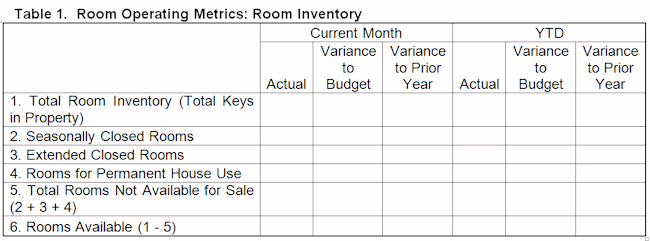The 11th revised edition of the Uniform System of Accounts for the Lodging Industry (USALI) was published in the spring of 2014, with an implementation date of January 1, 2015. The responsibility for revising the USALI lies with the Financial Management Committee (FMC) of the American Hotel & Lodging Association (AHLA).
Throughout the implementation process, the FMC has received several questions from the worldwide lodging industry. To answer these questions, the FMC has created a Frequently Asked Questions (FAQ) document on the USALI resource portal page of the AH&LA Education Institute’s website (www.ahlei.org/usali).
In an effort to assist hotel owners and operators with their implementation, the FMC presents a series of monthly articles that address some of the most frequently asked questions. Some of the topics to be discussed include gross versus net revenue reporting, labor cost reporting, the change from cover to customer counts, mixed-ownership facilities, and service charges.
For this month we present guidance regarding the new financial ratios and operating metrics presented in the USALI prepared by committee member Agnes DeFranco.
* * * * * * * * * * *
FINANCIAL RATIOS AND OPERATING METRICS
By: Agnes L. DeFranco
The FAQ for USALI 11th Revised Edition is full of many insightful pointers. One of the questions in the FAQ is as follows:
Question: Did the F&B schedule in USALI take into consideration the Uniform System of Accounts for Restaurants?
Answer: The Food & Beverage Sub-Committee considered all reporting standards in the food & beverage industry and the activities of the F&B Council of the AH&LA. As you are aware, the Uniform System of Accounts for Restaurants anticipates internal financial reporting for a single stand-alone business operation, whereas the USALI anticipates internal financial reporting in the multi-faceted business operations of the lodging industry.
Indeed, the USALI 11th revised edition contains a list of twenty metrics known as the AH&LA Food and Beverage Council Metrics that measure catering/banquet revenue per square foot (or meter) of function space to in-room dining revenue per occupied room. Metrics represent a report card of the performance of a certain department, or the entire hotel. They are tools for managers to track, assess, and evaluate performance. They can be used to set goals so that management can compare actual performance to budgeted figures. They can also be used as comparison points against the competition. Metrics are so vital that in the 11th revised edition, the Ratios section in the previous editions is now expanded into the Financial Ratios and Operating Metrics.
The USALI 11th revised edition provides hotel operators and owners metrics in the seven major areas of a lodging property: Rooms, Food and Beverage, Golf Course and Pro Shop, Health Club and Spa, Parking, Utilities and Refuse or Waste, and Labor Cost. For each of these areas, besides the definitions and formulas to calculate all these metrics, the most useful and informative part perhaps is the recommended tables as to how these metrics should be presented. For example, in the Rooms area, an excerpt of the recommended table to present the metrics for rooms inventory can be seen in Table 1.
For Food and Beverage, besides the useful metrics from the AH&LA F&B Council, the 11th revised edition also recommends similar tables to track revenue mix, cost of food, cost of beverage, inventory turns. The book presents three charts for users to track F&B performance using revenue and departmental profit per available seat by venue (with the number of seats per venue clearly stated), food cost and beverage cost by venue (with the number of seats per venue clearly stated), and finally customer count and average check per venue per meal period. These three tools afford food and beverage directors with solid and tangible performance information to share with his or her staff in order to set proper strategies to enhance profitability for the overall lodging operation.
There is more information and details for these two departments. More importantly, the metrics presented in the other areas can really assist operators and owners to have the proper knowledge to better manage their hotels. Some of the GAAP principles include relevant (timely), consistent, and comparable accounting information. Thus, using these metrics, owners and operators can compile timely reports and perform accurate analyses. Then, these metrics can be brought to live in charts and mapping points and then share with associates and team members. Just as students like to see A’s on the report cards, operators and owners would also like to have a dashboard so they can easily ascertain the performance of their hotel. This section of financial ratios and metrics is the answer. Let’s get started!
Agnes L. DeFranco is a Professor and the Conrad N. Hilton Distinguished Chair at the Conrad N. Hilton College of Hotel and Restaurant Management, University of Houston. She served as President of the Hospitality Financial Technology Professionals (HFTP) in 2006-2007 and currently chairs the committee for HFTP to develop the Global Hospitality Accounting Common Practices, an online, searchable database of detailed operating financial practices.
* * * * * * * * * * *
To purchase a copy of the 11th edition of the USALI, view the nearly 100 questions and answers on the FAQ, or submit your own question for the FMC, please visit www.ahlei.org/usali. This article was published in May 2015 by the American Hotel & Lodging Educational Institute (AHLEI). For detail information visit www.ahlei.org/usali.


